Lemongrass is a tropical plant that produces a distinctive herb that has made its way into a number of essential products. The lemongrass plant (Cymbopogon) is known by a number of names, including citronella (Via ResearchGate). The plant is prized as an herb that makes its way into traditional Asian dishes, and according to Plant Care Today is often grown for the citronella oil extract that is leveraged as a natural defense against mosquitoes.
SFGate reports that there are more than 50 native species of lemongrass found across southern Asia. Lemongrass is fairly easy to grow and can make for a great ornamental addition to a home garden while providing natural protection against mosquitoes if planted near seating areas and walkways. Lemongrass is easy to cultivate in virtually all warm climate areas and can add a unique zest to your cooking and general wellness routine. Medical News Today reports that lab testing shows that drinking tea infused with lemongrass can lower cholesterol and improve gut and mouth health as well.
How to use lemongrass in your garden
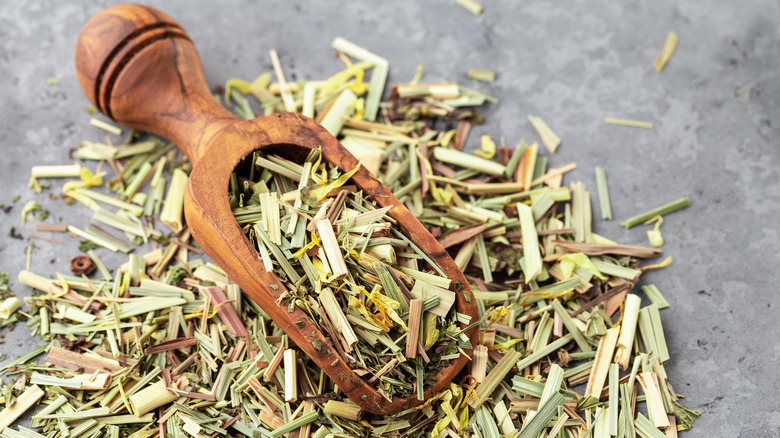
Lemongrass should be planted either in containers or as a border shrub. In areas where the temperature drops significantly during the winter months, containers are a must (via the Royal Horticultural Society). Because this plant is native to tropical climates, a home garden located in northern regions will see the plant die if it’s left outside. Growing lemongrass in a greenhouse or small containers that can be brought into the home and placed on a windowsill will help you get around this issue.
In more tropical gardens, lemongrass serves both as an herb to be used in the kitchen and is a balm for warding off the onslaught of mosquitoes that return each spring to wreak havoc on warm weather plans. Studies consistently show that the intense scent of lemongrass repels, and can even kill mosquitoes (via Conserve Energy Future). Planting this crop strategically can therefore provide a natural layer of protection for you and your family and friends as the spring and summer months welcome a greater use of outdoor space.
How to grow lemongrass
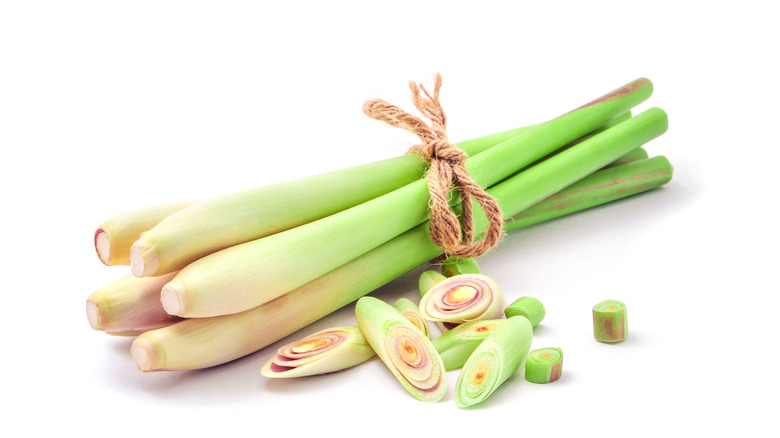
Growing lemongrass is quite simple. The Royal Horticultural Society recommends starting lemongrass seeds in a heated propagator, then sow them gently on the surface of small nursery pots. Lemongrass grows quickly, and you’ll soon need to move the plant into larger pots or into a permanent space in your garden that will support the continued growth.
Lemongrass does best with consistent sun, and it should be noted that the plant grows quickly and can become a nuisance if you let it as a result. Homeowners who plant lemongrass would be best served by routinely harvesting mature stalks for use in making tea or using as a spice in cooking. Gardening Know How reports that lemongrass can be harvested at any time, but the component of the plant that you’ll use is the interior, bottom section of the stalk itself, not the grassy growth that accompanies these hardy shoots (although this can be used in teas if you choose to incorporate it). Harvesting is often done when the inner stalks measure between ¼ and ½ inch thick.
Harvesting lemongrass is as simple as snapping the stalk away from the remaining plant. Likewise, preparation is straightforward as well: Simply clean away any dirt that has come up with the crop and strip away woody or papery outer layers to reveal a cohesive and fresh stalk of lemongrass.
How to care for lemongrass
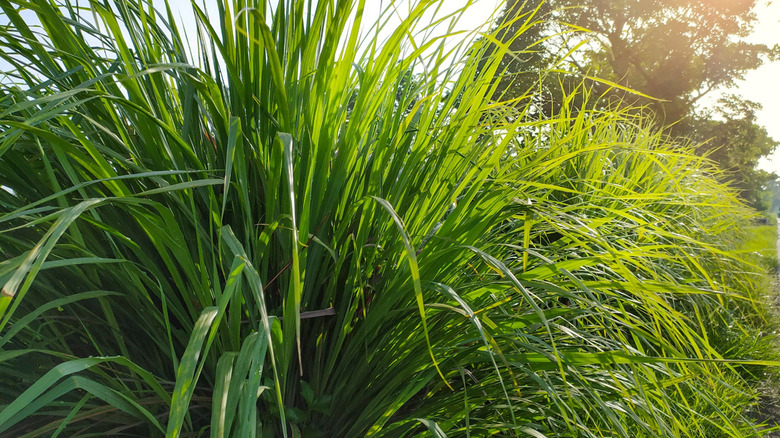
noer cungkring/Shutterstock
Caring for lemongrass is just as simple as harvesting the plant. Lemongrass grows freely, and simple watering is all that will be required of you to ensure that the plant continues to thrive in your garden.
Starting a new lemongrass seed requires mostly monitoring. However, many growers choose to cultivate a new lemongrass crop through cuttings rather than seed (via Vertical Veg). This gets the plant on its feet faster and will bring about the benefits that lemongrass can provide on a much shorter timeline.
Ensuring that your lemongrass plant gets enough sun and keeping the soil somewhat moist is all it takes to care for a lemongrass plant. It’s important to note though that because lemongrass multiplies so freely, you will likely need to divide the plant when it begins to bush out. Simply pulling out stalks that have grown away from the main section that you intend to cultivate is all it will take to prune the plant and keep its growth in check. These extracted stalks can be used in your culinary space, replanted elsewhere to continue propagating more lemongrass, or rough mulched and composted to feed the overall health of your garden and soil.
Lemongrass varieties
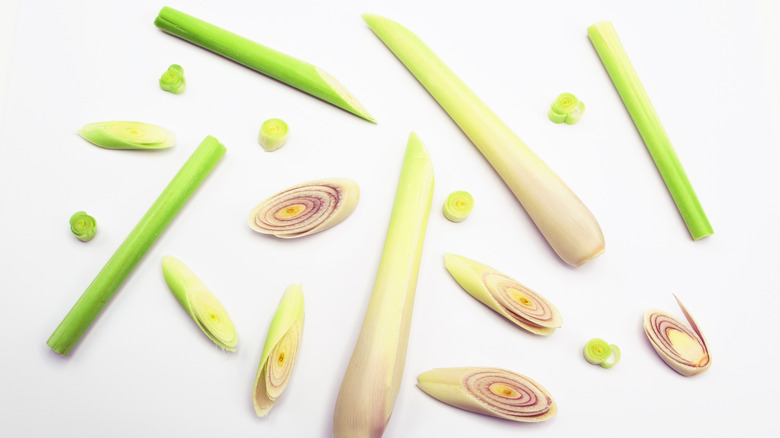
Num LPphoto/Shutterstock
SFGate reports more than 50 distinct varieties of lemongrass in existence, with Java Citronella, Ornamental Lemongrass (or Oil Grass), and East Indian (or Malabar) Lemongrass among the most prominent. India’s National Horticulture Board also names a few specific lemongrass varieties of note.
- Malabar or East Indian Lemongrass (Cymbopogon flexuosus): This variety retains the characteristic lemon scent and flavor but includes additional ginger-based notes as well.
- Java Citronella (Cymbopogon winterianus): This type of lemongrass propagates as a dense clump and is native to Indonesia’s Java Island. The stems are purple or yellow rather than the typical light green.
- Ornamental Lemongrass: This variety is also sometimes referred to as Oil Grass or West Indian Lemongrass. The USDA classifies this type as a perennial evergreen, thriving in USDA zones 10 through 11, but can survive in zone 8 as well (The Daily Courier offers a map showing the zone areas in the United States).
Is lemongrass toxic?
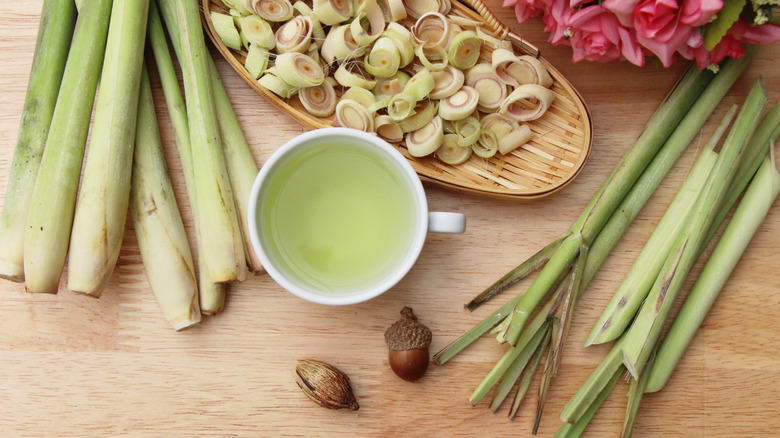
seagames50 images/Shutterstock
The ASPCA reports that the essential oils in lemongrass are toxic to pets, though Wag Walking suggests that a nibble of the plant’s leafy structure won’t harm your pet. If you’re thinking of adding this herb to your garden, caution is advised. It’s always a good idea to ensure that your dog or cat is supervised while around any plant life.
As well, if you are growing lemongrass in an effort to extract the essential oils yourself for use in the home, you should always keep your pet away from the finished product. The essential oils present in lemongrass are what drives mosquitoes away, and so this can be harmful to your pet if ingested in any significant quantity. Sundays reports that eating these products in any amount that exceeds a simple nibble in the yard can lead to vomiting or diarrhea, but the effects are typically limited to these short term issues.
How to repot lemongrass
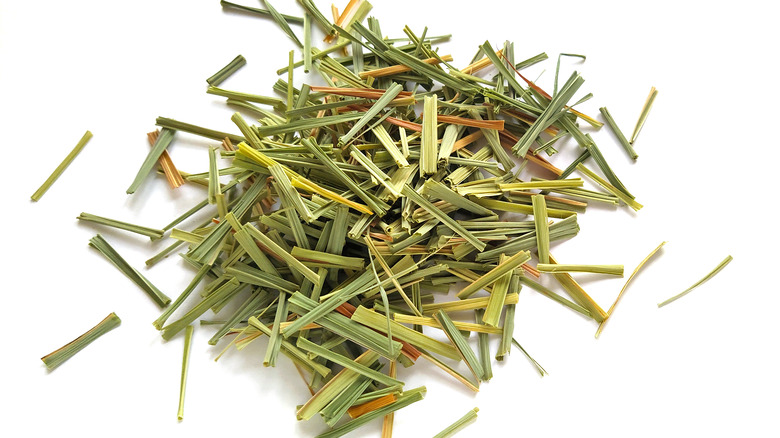
Sunbunny Studio/Shutterstock
Lemongrass is incredibly easy to repot and replant. The process involves simply tearing away stalks from the main plant mass. Consumers have been growing a healthy supply of spring onions from a store bought original for many years and the process of planting these plants couldn’t be simpler (via Brisbane City Council). Cultivating lemongrass from an existing plant functions in nearly identical fashion. Once you’ve removed a section of the initial plant, placing it in a new pot or target area in the garden and watering the soil will result in the establishment of a new lemongrass plant.
Repotting lemongrass gives you the opportunity to continue cultivating a growing supply of this great herb. Because of its versatile use cases and fast growth rate, lemongrass has become a staple in many home gardeners’ planting schedules. Repotting the plant also gives you the opportunity to generate a wall of protection from mosquitoes during the warmer months that can be moved around to accommodate different areas of your home’s exterior space. Then, once the weather begins to cool off and this threat retreats again, harvesting additional lemongrass stalks will keep your pantry stocked for months.
Lemongrass as a natural remedy
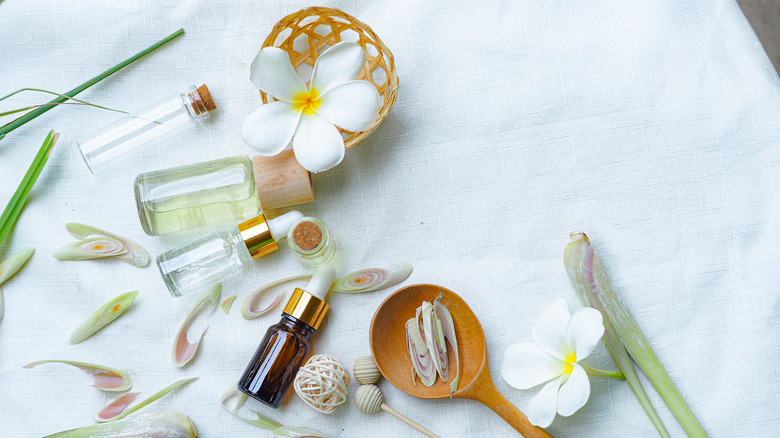
Junjira Limcharoen/Shutterstock
Indigo Herbs reports that lemongrass has enjoyed a central role in traditional healing. The plant has been used for centuries as a remedy to reduce fever and treat cold symptoms. Similarly, Healthline provides context, reporting that lemongrass essential oils contain antibacterial properties and works as an anti-inflammatory agent.
The anti-inflammatory properties are striking in the herbal remedy, and usage can bring a significant benefit to anyone seeking relief from routine strains and stressors on the muscles and joints as a result.
Natural and ancient remedies often prove to have modern medicinal value upon further study, and lemongrass is no different. Including this herb in your diet is a great way to improve cholesterol and blood sugar; Healthline even suggests that lemongrass extract can act to relieve stress and anxiety in everyday life. In sum, the benefits that lemongrass can provide are multifaceted and significant.
How to fertilize lemongrass
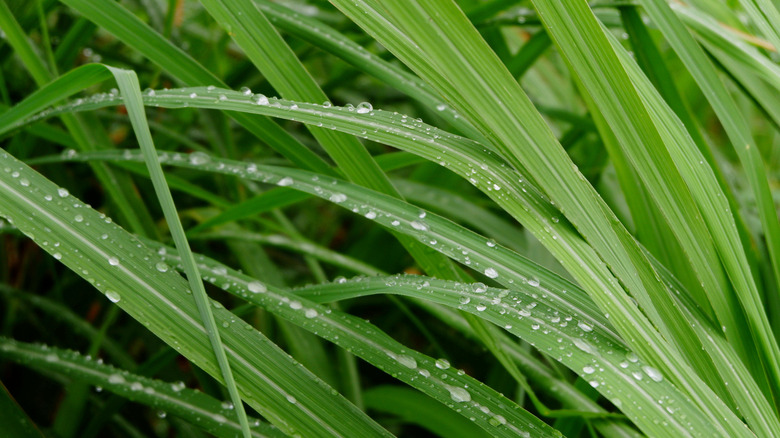
KucingPutih/Shutterstock
The Spruce reports that lemongrass thrives when provided with a fertilizer high in nitrogen. A 6-4-0 fertilizer mix is a great option for lemongrass. However, a well-kept garden won’t require much in the way of additives in order to ensure the health and longevity of your lemongrass plant.
Sun, water, and heat make for long lasting and healthy lemongrass. If you are growing the plant in a potted environment, it’s a good idea to use high quality potting mix — ideally one that incorporates a good amount of nitrogen, of course. Lemongrass is quite self-sufficient, so once you’ve established the root system and the plant is sending out new leafy growth, it’s often best to simply leave the plant to its own devices and harvest the mature stalks when you are ready to use them. Once again, it’s worth noting that lemongrass can typically be harvested whenever you want to use it after it has been established, but the longer you wait, the more viable herb material you will have at your disposal.



